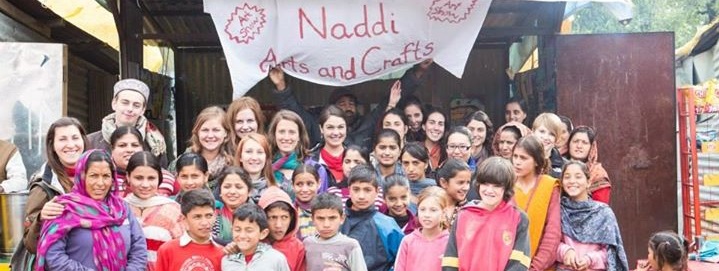The coordinator role at EduCARE involves providing support and guidance to not only yours, but all projects that run under your department’s domain. As of now, EduCARE has official forestry projects in both our Naddi and Harike centres, however when I first arrived Naddi’s was the only one established. I gained a lot of valuable knowledge living and working in Naddi for 3 months – the Indian culture, the biodiversity of Himachal Pradesh and ‘torro torro’ Hindi. When the centre opened in Harike and the first forestry intern arrived to take a position there, I knew my time in Naddi would come to an end to fulfil my role of project coordinator. Within my time living in both states, I’ve come to understand three main differences between the two centres: the projects, the people and the pollution.
When I first arrived in Naddi, there were many documents I needed to catch myself up on in order to get a grip on the existing and past projects. The green gift project, the plantation and the tree nursery were all great efforts from past interns, but unfortunately had been halted with the several month gap between forestry interns. My goal in Naddi was to revive each of these projects, starting with shifting the ownership of the plantation to the community and restarting the tree nursery to supply saplings to the plantations and community in the future. After Johnatan and Louise arrived, the projects made great headway and they each took their contributions to another level to lead our initiatives to sustainability and success.
On the contrary, Alex and I made it to Harike with little to go off of other than the few research papers on the Harike Wetlands and the knowledge that the communities surrounding the protected area were depending on its products. Most of our work so far has been creating a network of local stakeholders and support, as well as engaging and learning about the communities that we will eventually be starting our projects with. Being the first forestry interns at the centre, we are committed to creating a thorough and organized database of our gathered research.
Over the years, Naddi interns have made strong connections with the community and local shopkeepers; it’s not uncommon for Omi of Om’s café to slip you a free chai with your breakfast paratha or share a delicious dahl dinner with the village families. Naddi was so much like a second home to me, that when I arrived in Harike I almost forgot that I wasn’t native to India! We are still met with curious stares from every direction and have to barter in the markets to get local prices. Although we are becoming acquainted over chai with individual families in the villages, we still have a ways to go to establish a trusted bond that is parallel to those with Naddi’s communities.
 |
| Flock of birds at Harike Wetlands, a Ramsar site. The invasive flora specie, Water Hyacinth, has posed many issues in the wetlands, including siltation. |
The landscape between the two centres is vastly different; Naddi is in the foothills of the Himalayas, whereas Harike is located in the agricultural plains of Punjab. To the naked eye, Himachal’s environment seems pristine with its clean air and abundant resources. However, the area is severely littered with solid waste, its 5.1 million livestock population is degrading its productive land and its inhabitants and tourism sector are taking forest management into their own hands.
Punjab’s pollution problems are much more obvious. A thick cloud of smog gives the sunset an apocalyptic hue and the natural landscape has been transformed into chemical ridden crop fields. The bird sanctuary in the wetlands is a beautiful escape from the bustle of the city, however effluents from industries upstream have threatened aquatic life and an invasive specie, Water Hyacinth, has taken up almost 50% of the wetland’s surface water. Both centres have pollution issues that would rouse the concerns and action of environmental enthusiasts everywhere.
It’s important for interns to experience more than one region of India while they are here, coordinator or not. New perspectives and a heightened knowledge of the Indian culture will bring a lot to your projects and will send you home with stories. Although saying a temporary so long to my project and friends in Naddi was not easy, the comforts and challenges in Harike have welcomed me to a whole other world within India.
Sydney Strelau - Canada
Forestry Project Coordinator, Harike (Punjab)


Very very informative and beautifully written, I enjoyed reading this so thank you
ReplyDelete